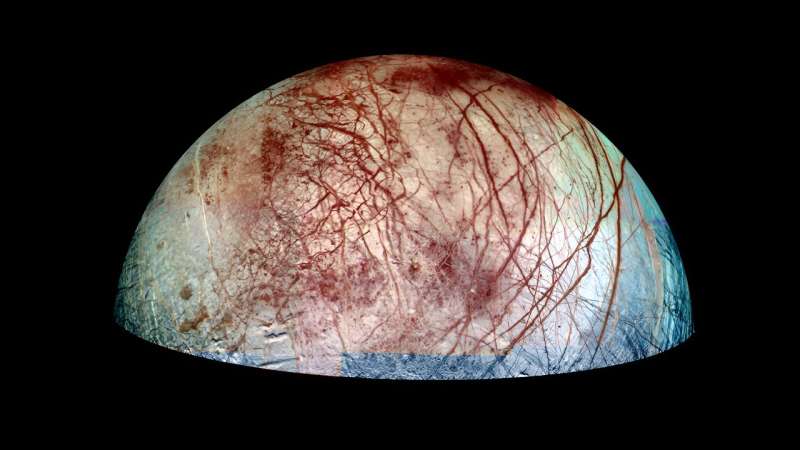Jupiter’s moon Europa has oceans of liquid water under its icy crust. Recently, scientists have been able to investigate which heat sources keep them in this state and how it is distributed. It is quite possible that this scientific work will help to understand whether there is life there.

Research of the moon
Europa, one of Jupiter’s many moons, may be able to support life because its icy surface probably hides a deep salty ocean. It is in direct contact with its mantle rocks, and the interaction between rocks, water and ice can provide it with energy to support life.
Scientists have investigated how heating of Europa’s mantle may affect ocean circulation under the icy crust. The researchers modeled the moon’s ocean to better understand how heating from the depths can affect the thickness of its icy surface.
Mantle heating is one of the factors of ocean circulation on Europa, and this heating occurs in two forms: radiogenic and tidal. The first one is caused by the decay of radioactive materials in the mantle, and the second one is caused by the deformation that a celestial body undergoes while orbiting Jupiter and experiencing its strong gravitational attraction.
At the same time, tidal heating is uneven: it is higher at the poles of Europa and lower at the points of the moon opposite and facing Jupiter. And this affects how heat is generally distributed in the icy oceans of the moon.
Europa’s oceans and currents
Using simplified idealized modeling that did not take into account salinity and feedback between the ocean and ice, the researchers studied how heat could transfer from the seafloor of Europa through its ocean and to the ice shell. They found that if tidal heating dominates in the mantle, then latitudinal fluctuations in the heat flow from the floor would be transmitted upward through the ocean and remain practically unchanged, affecting the thickness of the ice and making it the thinnest at the poles.
However, if radiogenic heating is the dominant type of mantle heating, then the ocean will have relatively little effect on ice thickness. The Europa Clipper 2024 mission can help confirm these simulation results and offer new insights into the relationship between Europa’s mantle heating, ocean circulation and the thickness of its icy crust.
According to phys.org
Follow us on Twitter to get the most interesting space news in time
https://twitter.com/ust_magazine


